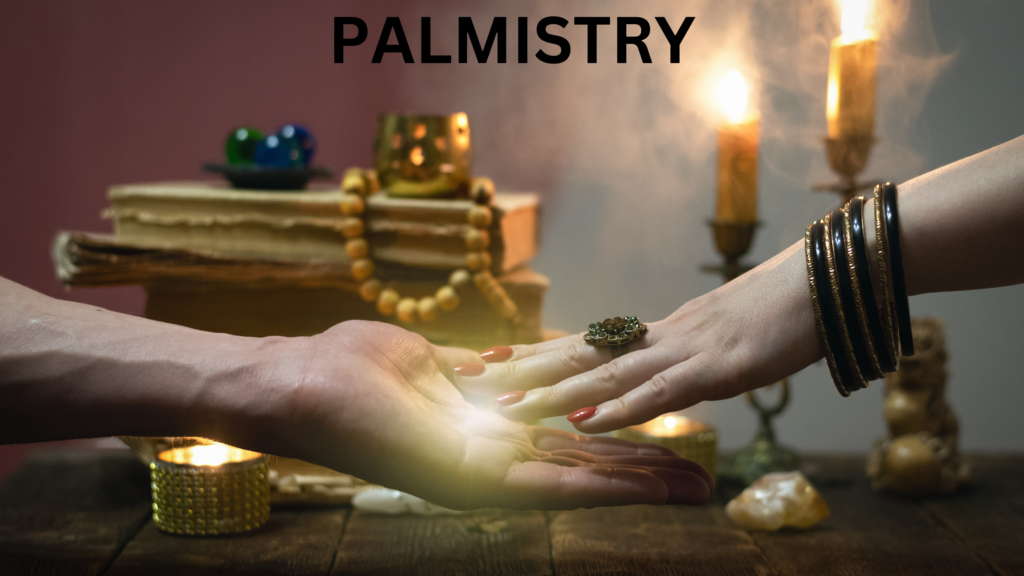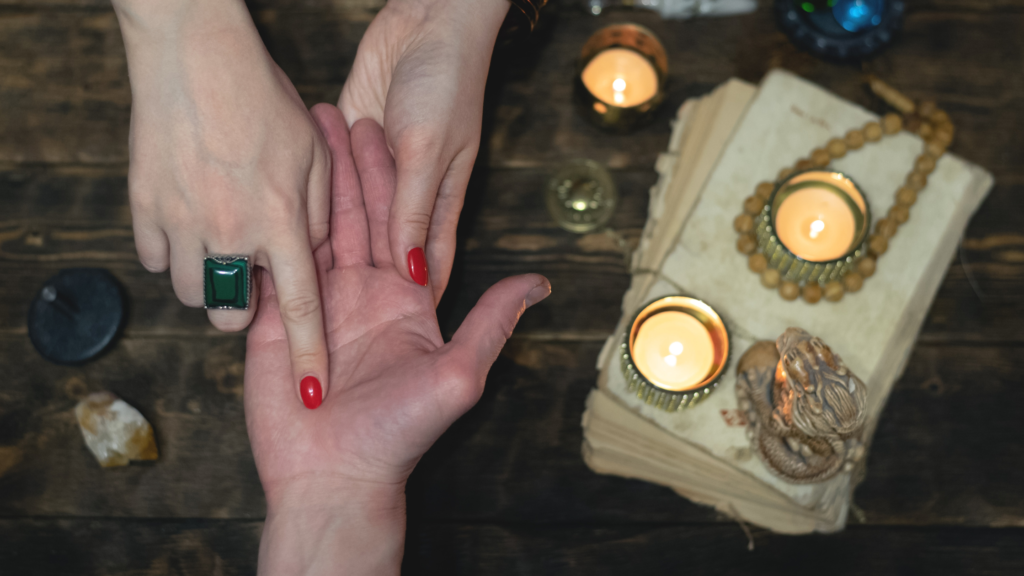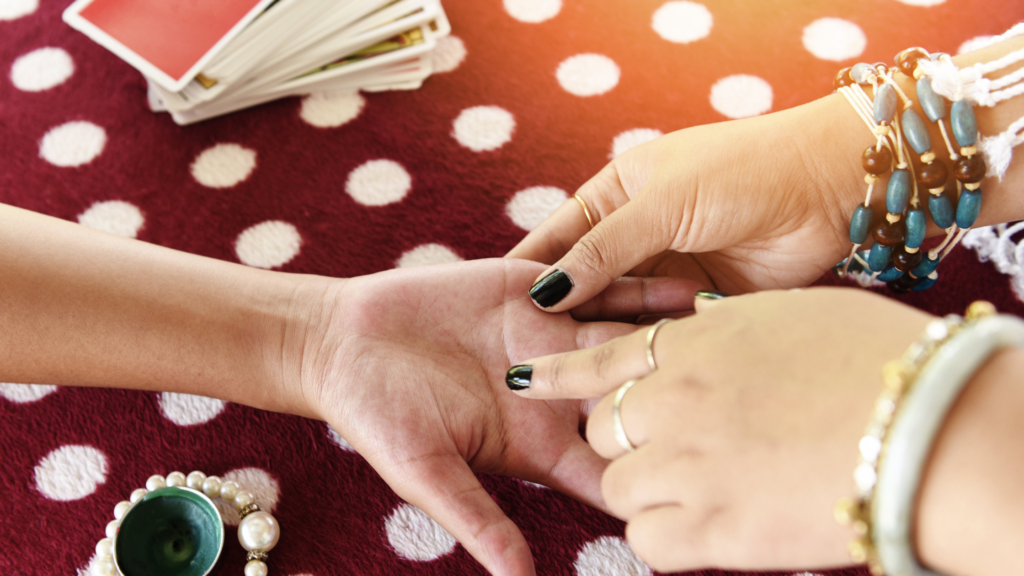From ancient civilizations to modern-day mystics, palmistry, also known as chiromancy, has fascinated humanity with its promise to reveal the hidden secrets of our lives through the lines on our hands. Whether you view it as a scientific study, a spiritual practice, or simply a form of entertainment, palmistry has endured the test of time, evolving into an art that continues to captivate people around the world.
This blog will explore the origins of palmistry, break down the fundamental elements of hand reading, and examine how palmistry can provide insights into various aspects of life, from love to career.
A Brief History of Palmistry
Chiromancy is one of the oldest forms of divination, with roots tracing back to ancient civilizations such as India, China, Egypt, and Greece. The practice was believed to have originated in India, where it was considered a part of Vedic astrology. It later spread to China, becoming integrated with traditional Chinese medicine and philosophy. The ancient Greeks also embraced chiromancy, with notable philosophers like Aristotle and Hippocrates studying the connection between the hands and human health.
In medieval Europe, chiromancy became associated with witchcraft and was often condemned by the Church. However, despite the challenges, it persisted as a form of divination, often practiced in secret. During the Renaissance, chiromancy experienced a revival, with practitioners studying the works of ancient scholars and developing more sophisticated methods of hand reading.
Today, chiromancy is considered a blend of art, science, and spirituality, practiced by professional palmists, spiritual healers, and even hobbyists who seek to understand the mysteries of the human hand.

The Fundamental Elements of Palmistry
At the heart of palmistry lies the belief that the hands can reveal important details about a person’s personality, emotions, and life experiences. To the untrained eye, the lines and shapes on the hand may appear random, but to a palmist, they are rich with meaning.
Palmistry focuses on several key elements:
1. The Major Lines
The three major lines on the palm—the heart line, head line, and life line—are considered the most important indicators of a person’s life and character.
- Heart Line: This line represents matters of the heart, including love, relationships, and emotional health. A strong, unbroken heart line indicates a person who is emotionally stable and capable of deep love, while a fragmented or faint heart line may suggest emotional challenges or difficulty in relationships.
- Head Line: The head line is associated with intellect, thought processes, and decision-making. A long, clear head line may indicate a logical and analytical thinker, while a short or curved head line might suggest creativity or emotional intuition.
- Life Line: Contrary to popular belief, the life line does not directly predict the length of a person’s life. Instead, it reflects vitality, health, and life energy. A strong life line suggests good physical health and stamina, while a weak or broken line may indicate potential health issues or periods of low energy.
2. The Minor Lines
In addition to the major lines, there are several minor lines that provide further insights into a person’s life. These include the fate line, sun line, mercury line, and more. The fate line, for example, is often associated with career and life path, while the sun line can reveal information about creativity, fame, and success.
3. Mounts and Fingers
The shape and prominence of the mounts (the fleshy pads beneath each finger) are also significant in palmistry. Each mount is associated with a particular planet and its corresponding traits. For example, the Mount of Venus, located at the base of the thumb, is linked to love, beauty, and passion, while the Mount of Jupiter, beneath the index finger, represents leadership, ambition, and spirituality.
The fingers themselves also hold meaning, with their length, shape, and flexibility offering clues to a person’s character. For instance, long fingers may indicate a detail-oriented and analytical nature, while short fingers suggest a more spontaneous and action-driven personality.
4. Hand Shape and Texture
The overall shape and texture of the hand are also important in palmistry. Hands are typically categorized into four elemental types—earth, air, fire, and water—each corresponding to different personality traits. Earth hands, for example, are square and solid, indicating practicality and stability, while water hands are long and flexible, suggesting sensitivity and creativity.
The texture of the hand can reveal additional insights. Soft hands often belong to people who are more attuned to emotions and intuition, while firm hands indicate a strong-willed and determined individual.

The Role of Intuition in Palmistry
While palmistry relies on certain established techniques and interpretations, intuition plays a crucial role. A skilled palmist reads the lines and shapes on the hand and taps into their own intuitive abilities to gain a deeper understanding of the person they are reading.
Intuition allows a palmist to go beyond the physical characteristics of the hand and connect with the individual’s energy, emotions, and life experiences. This combination of technical knowledge and intuitive insight is what makes palmistry a unique and powerful form of divination.
Debunking Myths About Palmistry
Despite its long history, palmistry is often met with skepticism, largely due to misconceptions and myths that surround the practice. Let’s address some of these common myths:
1. Palmistry Predicts the Future
One of the biggest misconceptions about palmistry is that it can predict the future with absolute certainty. In reality, palmistry provides insights into a person’s potential life path, strengths, challenges, and personality traits. It is not a fixed prediction of what will happen but rather a tool for self-awareness and guidance.
2. Everyone’s Hands Are the Same
Another myth is that palmistry is a one-size-fits-all practice. In truth, no two hands are exactly alike, and a skilled palmist takes into account the unique characteristics of each individual’s hands. The lines, mounts, and shapes of the hands can change over time, reflecting personal growth and life experiences.
3. Palmistry Is Superstition
While palmistry is often associated with mysticism, it also has a scientific aspect. The study of the hands has been linked to various disciplines, including psychology, medicine, and anthropology. For example, dermatoglyphics, the study of fingerprints, has been used in medical research to identify genetic disorders. Palmistry, therefore, can be seen as a blend of science, art, and intuition.
How Palmistry Can Enhance Your Life
Whether you believe in the predictive power of palmistry or simply view it as a form of self-reflection, there are several ways in which hand reading can enhance your life:
1. Self-Discovery
Palmistry encourages self-exploration and personal growth. By examining the lines and shapes on your hands, you can gain insights into your strengths, weaknesses, and potential life path. This self-awareness can empower you to make more informed decisions and navigate challenges with greater clarity.
2. Relationship Insights
Palmistry can provide valuable insights into your relationships, helping you understand your emotional tendencies and how they influence your interactions with others. For example, if your heart line indicates a tendency towards emotional sensitivity, you can use this knowledge to cultivate healthier relationships and communicate more effectively with your partner.
3. Career Guidance
The fate line and other career-related indicators in palmistry can offer guidance on your professional path. By understanding your natural talents and inclinations, you can make career choices that align with your strengths and passions. Palmistry can also help you navigate challenges in your professional life by revealing potential obstacles and opportunities.
4. Mind-Body Connection
Palmistry emphasizes the connection between the mind and body, encouraging a holistic approach to health and well-being. By paying attention to the signs on your hands, you can gain insights into your physical and emotional health and take proactive steps to maintain balance in your life.
Getting Started with Palmistry: Tips for Beginners
If you’re intrigued by palmistry and want to explore it further, here are some tips for getting started:
1. Study the Basics
Begin by familiarizing yourself with the major lines, mounts, and hand shapes. There are many resources available, including books, online courses, and palmistry guides, that can help you build a solid foundation of knowledge.
2. Practice Observation
Take the time to observe your own hands and those of others. Notice the differences in line patterns, hand shapes, and textures. Practice interpreting what you see, keeping in mind that palmistry is both an art and a science.
3. Develop Your Intuition
As you study palmistry, also work on developing your intuition. Meditation, mindfulness, and other spiritual practices can help you connect with your inner guidance and enhance your ability to read the hands on a deeper level.
4. Be Open-Minded
Approach palmistry with an open mind, recognizing that it is a tool for self-awareness rather than a definitive prediction of the future. Be willing to explore the insights it offers while also maintaining a healthy dose of skepticism.
Chiromancy, also known as hand reading, is an ancient and captivating art that taps into the belief that our hands are a mirror to our inner selves and life paths. This practice has intrigued people for centuries, as it delves into the intricate details of the hand—each line, ridge, and curve telling a unique story about an individual’s personality, potential, and future. What sets chiromancy apart from other forms of divination is its deeply personal nature; it offers a customized glimpse into one’s life that no two people share. The lines on your hand are as distinct as your fingerprints, evolving as you experience new phases of life, and reflecting the choices you make along the way.
People often seek out chiromancy in moments of uncertainty, searching for answers about relationships, career decisions, or emotional well-being. It’s not just about predicting the future but about understanding oneself on a deeper level—what strengths and weaknesses lie within, and how best to navigate life’s challenges. This ancient practice offers more than just guidance; it provides comfort, a sense of connection to something larger, and an opportunity for self-reflection. Even those who approach chiromancy with skepticism often find that the experience sparks meaningful contemplation about their past decisions and future possibilities. In essence, chiromancy is a tool that encourages people to pause, reflect, and perhaps see their lives from a different perspective—all by simply looking at their own hands.
Conclusion: Embracing the Wisdom of Your Hands
Palmistry, with its blend of ancient wisdom and modern insights, offers a unique way to explore the mysteries of life. Whether you’re seeking self-discovery, relationship insights, or career guidance, the hands can serve as a powerful tool for unlocking your potential.


